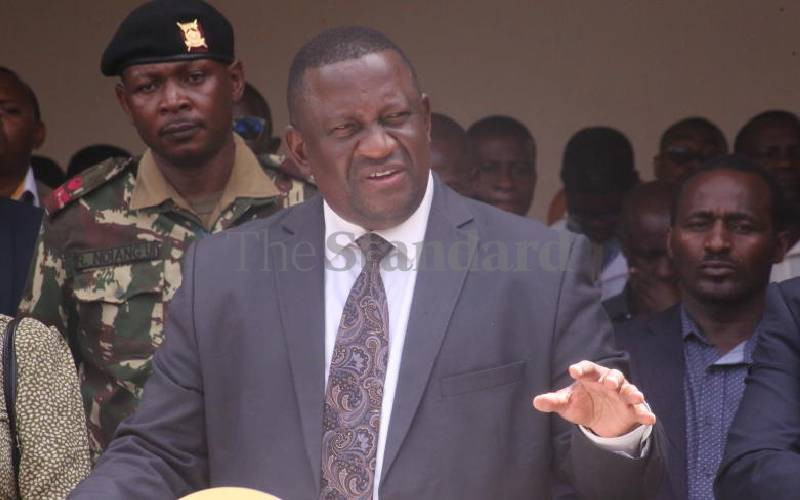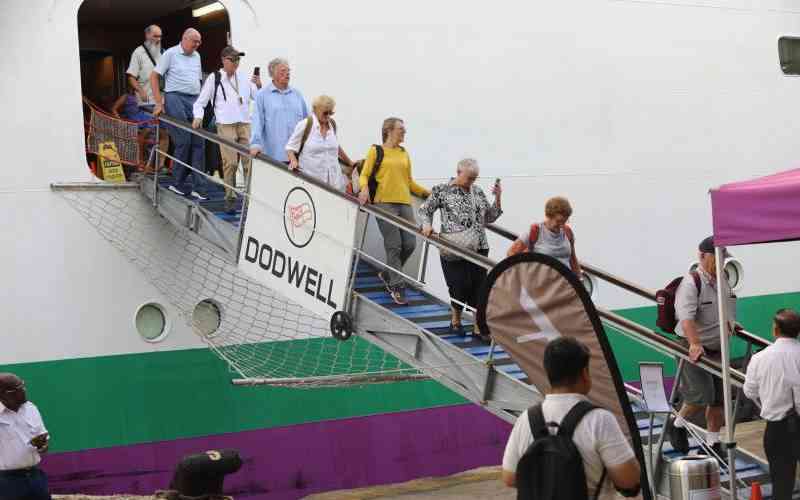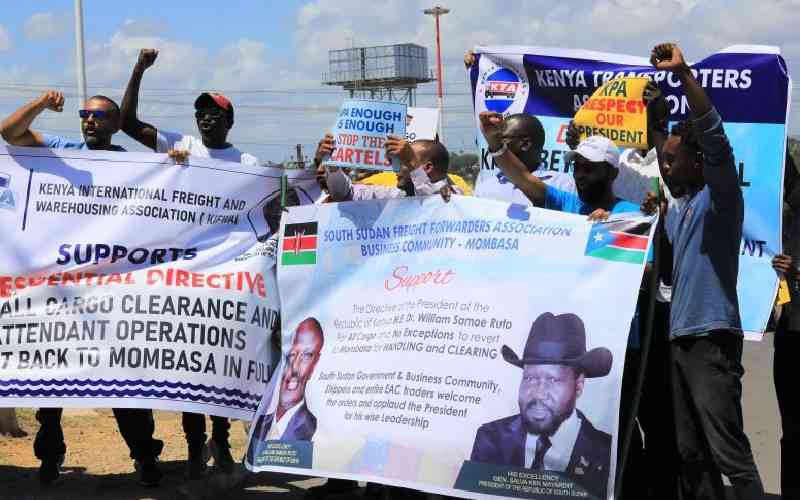By Jibril Adan
In the past few months, The Standard has highlighted mishaps of ferries that have often drifted midstream along the Likoni Channel in Mombasa.
But on Monday night the hunter became the hunted as I found myself a victim of the unpleasant experiences that commuters, who have been caught up in frequent ferry stalls, go through.
It was a hair-raising one hour floating in seemingly rudderless circles. A nightmare rocked my nerves as sea waves hit the stalled vessel.
All those assurances by Kenya Ferry Service that their vessels were equipped with air tanks to make them unsinkable, screamed in my cold ears as fellow commuters switched to panic mode.
I had left the office at 6.30pm to try make it in time for an 8pm interview in Diani, South Coast and hoped to return to Mombasa before 10pm.
Evening bliss
Along with our driver Mr Carter Nzomo, we were in the middle of the usual Mombasa evening bliss, as our sturdy Nissan pick-up joined the queue of other vehicles and thronging pedestrians, onto the raft from the mainland into the ferry.
The MV Nyayo looked intimidating and perhaps reassuring by the height of its floodlit metallic network.
We drove onto the ferry amid the jostling of pedestrians who were boarding, most carrying shopping bags as they headed home.
But just before the ferry started moving, a big ship crossed the channel, heading into the high seas and in its wake, remained a whey of rising waves.
The ferry that had started moving, rocked from side to side and I wondered what was happening. But I was not reassured.
All of a sudden, the ferry changed course and started moving faster towards the deep sea. We were suddenly facing East instead of South.
The coxswain had apparently shut the engine and the mass of humanity went silent, save for the lapping of the waves against metal.
Passengers went quiet, although some may have experienced this many times.
Stay informed. Subscribe to our newsletter
Being my first ferry trouble experience, I was distressed and frantically enquired from the guards what was happening. They offered no information.
One just murmured, "Tunapelekwa na mawimbi" (the waves are moving us away, I think to mean ‘We are drifting’).
The trouble seemed to last a lifetime. The engine finally roared back to life and the craft turned around and headed to the offloading point.
But the prow of the ferry, onto which its ramp connects for disembarkment, could not align well with the ramp.
For us the drama was yet to end. With about five cars, including ours, and less than 100 people, remaining on board, a security man told us to wait for the captain to align the prow with the ramp.
That did not happen and shockingly, the ferry sailed back to the mainland ramp amid commotion, screaming and cursing. It was apparently weakened and it just wobbled slowly, seeming to take an eternity to get its bearing back.
During the nearly one hour ordeal, no Kenya Ferry Service official, including the captain, bothered to tell us what was going on though the vessel is equipped with a public address system.
It was with a big sigh of relief when the vessel finally docked and we drove out, back to the mainland, my interview appointment long forgotten. During the time, we had seen another ferry that was not moving, also midstream.
Immediately we disembarked, I enquired about it.
"It has stalled," was all a security man said as he tried to control the people boarding the ferry. Immediately recovering from my earlier shock, I started monitoring what would happen to the Mv Harambee.
Failed engines
Harambee left the Likoni side before 7pm but when it was midway, one of the engines failed.
For an hour, KFS engineers who came alongside in small watercrafts, tried to rectify the problem without success.
"Nilisikia kama roho yangu imetoka," (I thought my heart would stop), said Maryam Salim, who was coming back from visiting relatives.
When KFS engineers rectified the engine problem, they deployed MV Kilindini to support the stalled craft.
The ferries have similar designs and can give each other a push by locking onto each other side by side.
A tugboat belonging to Kenya Ports Authority with powerful searchlights arrived at the location and followed the two ferries in case a problem occurred.
Finally, when the ferry docked on the Mombasa side, the passengers sighed with relief and just like the MV Nyayo case, they scampered out and did not wait for the motorists to move out first as they always do.
Ms Elizabeth Wachira, who is in charge of KFS communications department, says the Mv Harambee was repaired.
"It had a problem in one engine but now that it has been repaired, it has been working the whole morning" she said.
Transport Minister Chirau Ali Mwakwere led a team, including KFS Managing Director John Ria, to check on two ferries ordered five years ago that are yet to be delivered.
The writer is The Standard’s Coast Bureau Chief.
 The Standard Group Plc is a
multi-media organization with investments in media platforms spanning newspaper
print operations, television, radio broadcasting, digital and online services. The
Standard Group is recognized as a leading multi-media house in Kenya with a key
influence in matters of national and international interest.
The Standard Group Plc is a
multi-media organization with investments in media platforms spanning newspaper
print operations, television, radio broadcasting, digital and online services. The
Standard Group is recognized as a leading multi-media house in Kenya with a key
influence in matters of national and international interest.
 The Standard Group Plc is a
multi-media organization with investments in media platforms spanning newspaper
print operations, television, radio broadcasting, digital and online services. The
Standard Group is recognized as a leading multi-media house in Kenya with a key
influence in matters of national and international interest.
The Standard Group Plc is a
multi-media organization with investments in media platforms spanning newspaper
print operations, television, radio broadcasting, digital and online services. The
Standard Group is recognized as a leading multi-media house in Kenya with a key
influence in matters of national and international interest.







